Summer. The world is full of treasures. In the pine tree, the tiniest of trills heralds the appearance of the tiniest of birds; a goldcrest. He potters and flits, busy about his work. At the kitchen window, a newly fledged great tit, feathers still tinged with the yellows of babyhood, pecks at the bugs that live under the house cladding. I used to pretend I was some magical Disney princess, that the birds were pecking on the window so that I could let them in to assist with my daily chores, or perhaps make me a ballgown. Sadly, they only want the bugs that hide under the cladding.
College, as I wander through, is slowing down; resounding with the sounds of cricket, or, I suppose, I should more poetically say the sounds of willow on leather, all sunshine and pimms. And it’s still dry. Not high summer, and still watered by morning dew, but not enough. I begin to fear for the newly planted saplings in the fields, the ground around them hard and cracked, the grass already bleached from the stress of the planting. The housemartins are back though, and the swifts. There’s been an increase in swifts. I think the new houses might have those special bricks they can nest in, which all new houses should have in my opinion. The swans chicks hatch, and the male takes to harassing the babies of the Egyptian geese*, as if they were some terrible threat, or he is just jealous of their abundance. They have 9 chicks this year, which have thus far all survived. Last year, all the swan chicks were taken. They nest in the same spot all the same, which seems reckless.
The house is full of bees, periodically, over the course of a week. I do not know where they are coming from. I open windows and let them out in groups of three. They are replaced by flies, fat summertime bluebottles haphazardly skewing through the room. Turns out blue bottles can sense minute temperature differences; they are not haphazard at all. They are picking their path very carefully, sensitive to a world we are unaware of. I still try and bat it away from me, which it easily avoids because it live on a different, faster timescale.
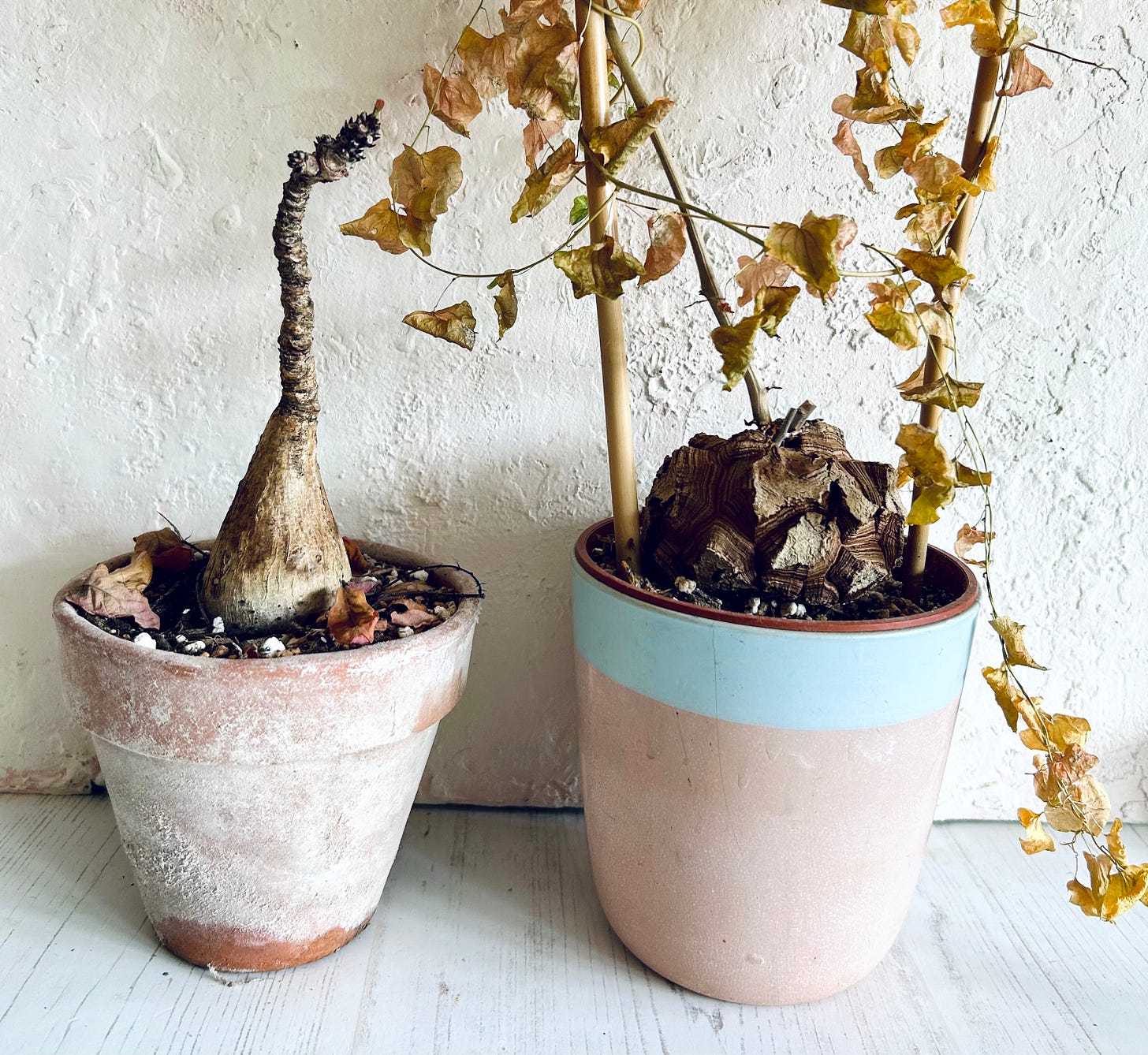
The discorea elephantites dies back, the phylanthus miribalis starts to put out leaves. I like this symmetry in my caudex plants, a relay of rest and growth. The lawn looks dry on the rabbit nibbled edges. It seems too early to start to pray for rain. Kevin asks me if I’m enjoying the weather and I tell him I am suspicious. ‘probably means this is summer. it’s going to rain the rest of the year’ he says cheerfully, at the suggestion of another long summer of drought. Not last year, that wasn’t a summer at all. I am British. I want my good weather in small installments over the course of three, maybe four, months, not two years worth in one solid block. There’s no balance in my life, but I’ll tell you about that another day. Today, I have important work to attend to in the hammock.
Hares
In the spring and the early summer, before the crops get high, we walk around the ridgeway to see the hares. By rights there should be hares in the fields around me. There once were. I know because all this countryside once belonged to them. Now the fields have become cut into parts, bisected by roads and cutoff by impassable dual carriageways. Hares need a lot of room to roam about and even along the quieter ridgeway, I see one murdered in the verge, victims of a road I am complicit in. My husband is the first to spot a live one, and I sense his pleasure in finding one for me. I have no reason to suppose he has any more interest in hares than I do in snooker (which I will watch with him later). His only interest in hares is that I like them, and he likes me. The hare sits in an open field, an empty space of ploughed soil. Unlike rabbits she does not hide. She can see all round her, and above, and she knows she can run, a confidence that allows her to sit unashamed in the open. She stands and stretches, standing high, suddenly tall and deer-like, before lolloping a few steps, nibbling, disappearing behind the curve of the field.
I could draw hares endlessly, associating myself with their undomesticated wildness, so often mistaken for timid rabbits, surprising that assumption with their unfamiliar otherness. Hares and not rabbits. I am not quite human. I look like a human from a distance but I am wild and untamable. I love hares so very much. I love the multi toned fur, so course and touseled in places, first red, then brown, or white or grey. I love the gold and amber eyes.
I read Chloe Daltons ‘Raising Hare’ during the hot spell, the hammock days, alternately jealous of her closeness to my beloved, and chastising myself for neglecting all I do have in the garden, the rabbits, the deer, all the birds. Hares or no, I am very lucky here. It is a charming book, and important, though as is often the way with nature writing full of the sadness of what we have lost, and what we continue to abuse (the same is true of the new David Attenborough film Ocean I saw this week. It’s impossible to enjoy the majesty of nature without reflecting on the impact of our own species but as David says, it is not too late).
Chloe has started a petition to give hares a close season- to make it illegal to kill them during the breeding season, as is the case for all other game. I would prefer that no wildlife were shot ever, as a matter of hypocrisy; there’s only one species whose population is out of control, and they are not hares. Hares are struggling. I urge you to sign if you are in the UK.
I’m reprinting blackbirds so they’ll be in the shop later in the week if you’re waiting for one.
Findings
David Attenborough turned 99 this week, on Thursday, and we went to the cinema to celebrate. In the absence of any functional grandparents, I adopted him as one of my own early in life, firmly deciding that no nature documentaries were worth thier salt unless accompanied by his voiceover, a position supported by my mum, who also grew up with David Attenborough being the voice of nature itself. This attitude was later adopted by my son, who firmly believes that David Attenborough has enough words recorded that we can generate his wisdom for all documentaries for ever more. Personally I do not like to think of a time without David Attenborough anymore than I like to imagine the apocalypse or the prospect of world war three. It seems probably in my mind that all three are interlinked, and David Attenborough is responsible for holding the civilised world together.
He’s certainly responsible for highlighting the need for conservation, reminding us in his lastest offering Ocean, which I saw in the cinema, of the multitude of ways man is damaging the very resources that sustain us.
He also reminds us it is not hopeless, that the Whales were once considered a nearly lost cause. It’s easy to forget victories like that, and the hole in the ozone layer, the issues that we fixed. I remember Save the Whales being a great injustice you had to hopelessly fight for, like free Nelson Mandela, a phrase you said but didn’t really think anyone was listening to. And then in the 90’s, the whales were saved. And now there are lots of whales, which is good, though at the documentary points out that massive trawlers in the Antarctic sucking up the krill and turning them into pet food could be a massive problem, what with krill being the basis of the whole food chain. I’m morally pure on that point because my pets are not eating Antarctic krill, because they basically are krill. I mean they would eat krill if they could, much like I started with seven shrimp and one vanished and then half of them were eggnant presumably on delicious protein. So far as I can see the shrimp tank is thriving, the biggest of the babies are about half the size of an adult now. Anyway, I digress; happy birthday David, the reason that tennis balls are yellow. My husband says that they are green, which caused an arguement before I found the definitive answer. David Attenborough says tennis balls are yellow, and you can’t argue with David Attenborough.
Here’s the link if you want to support my work so I can keep posting nonsense for free. Have a great week, friends x
*funk ducks. The ducks with the funk.




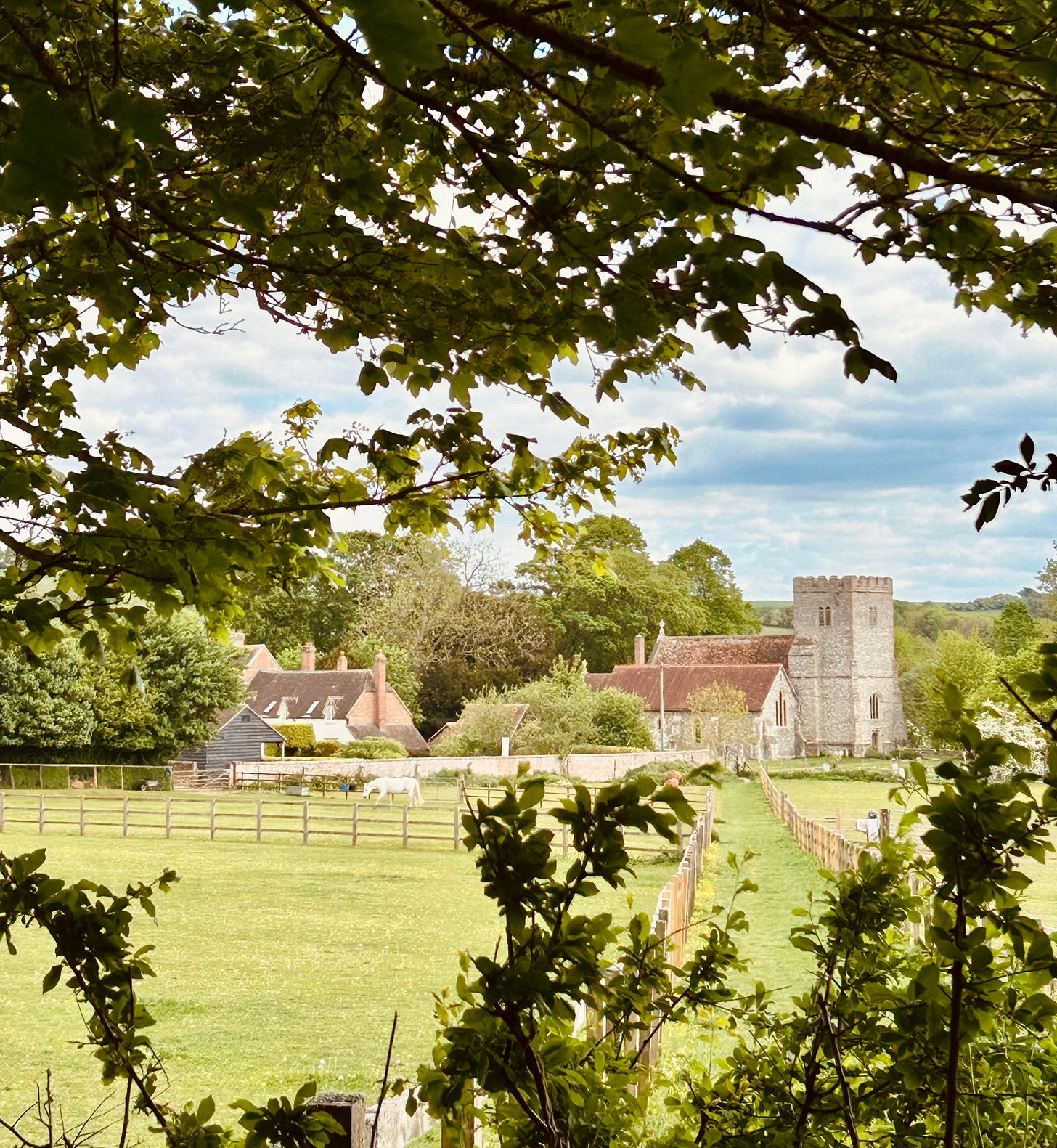
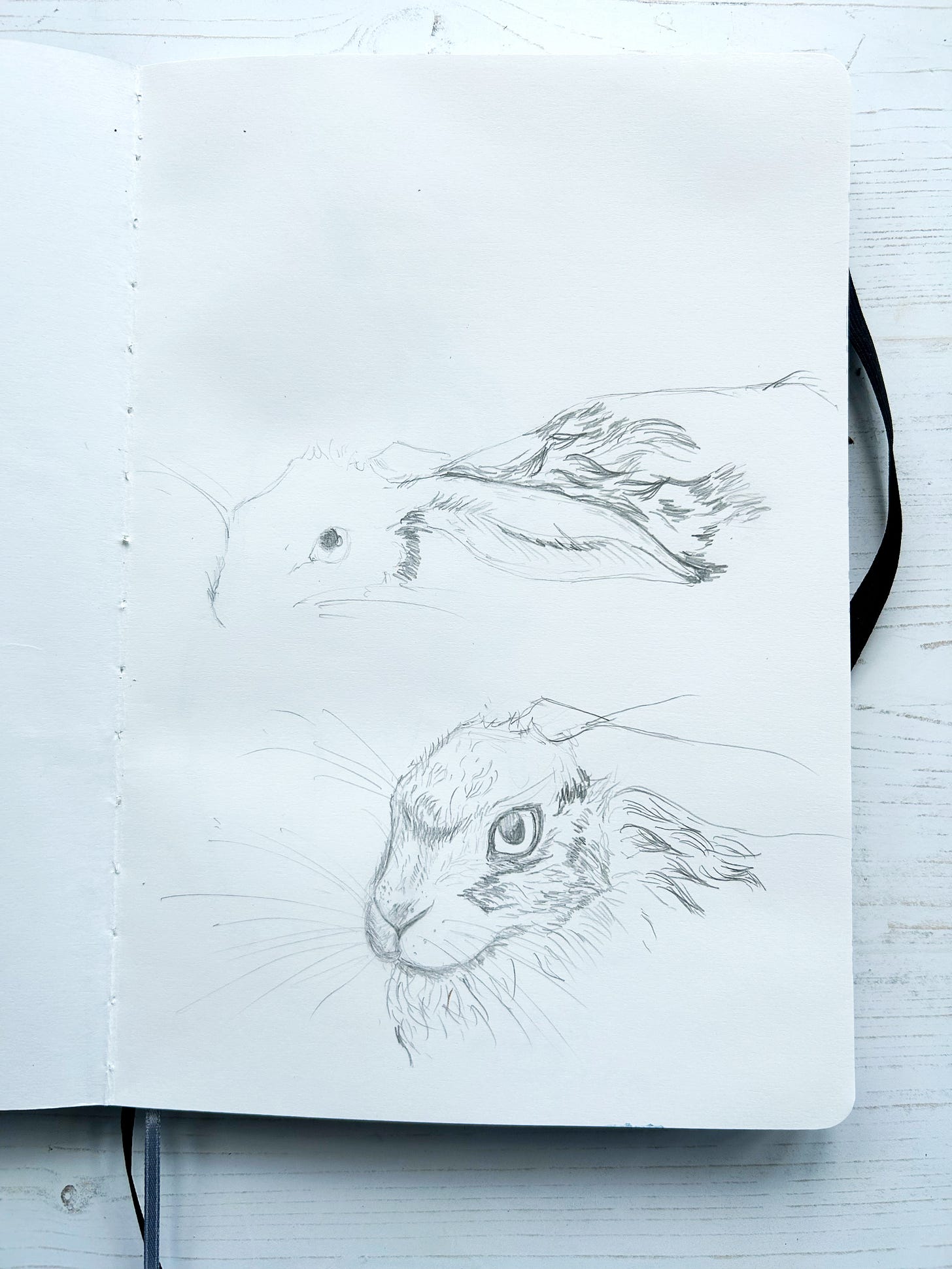
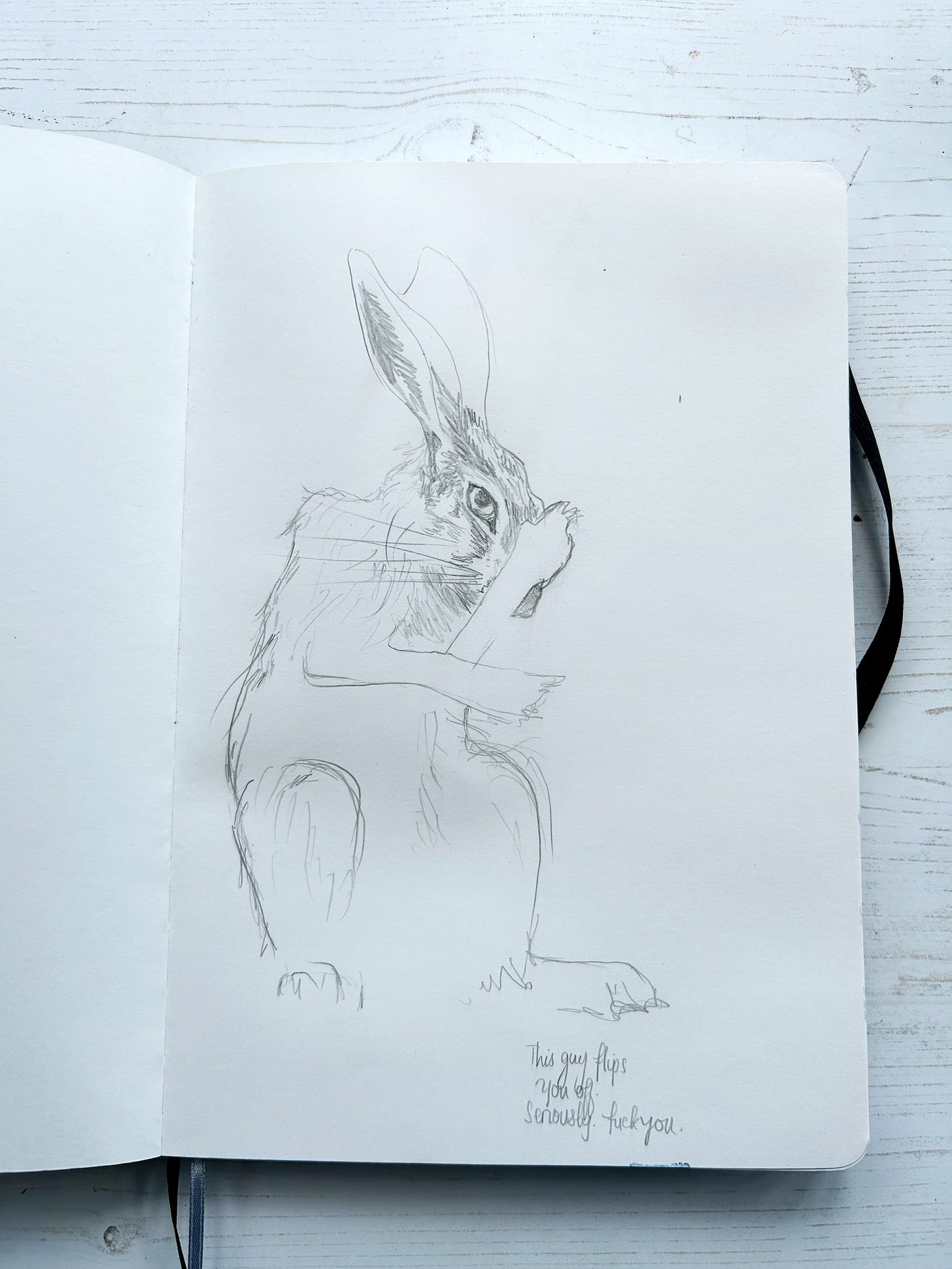
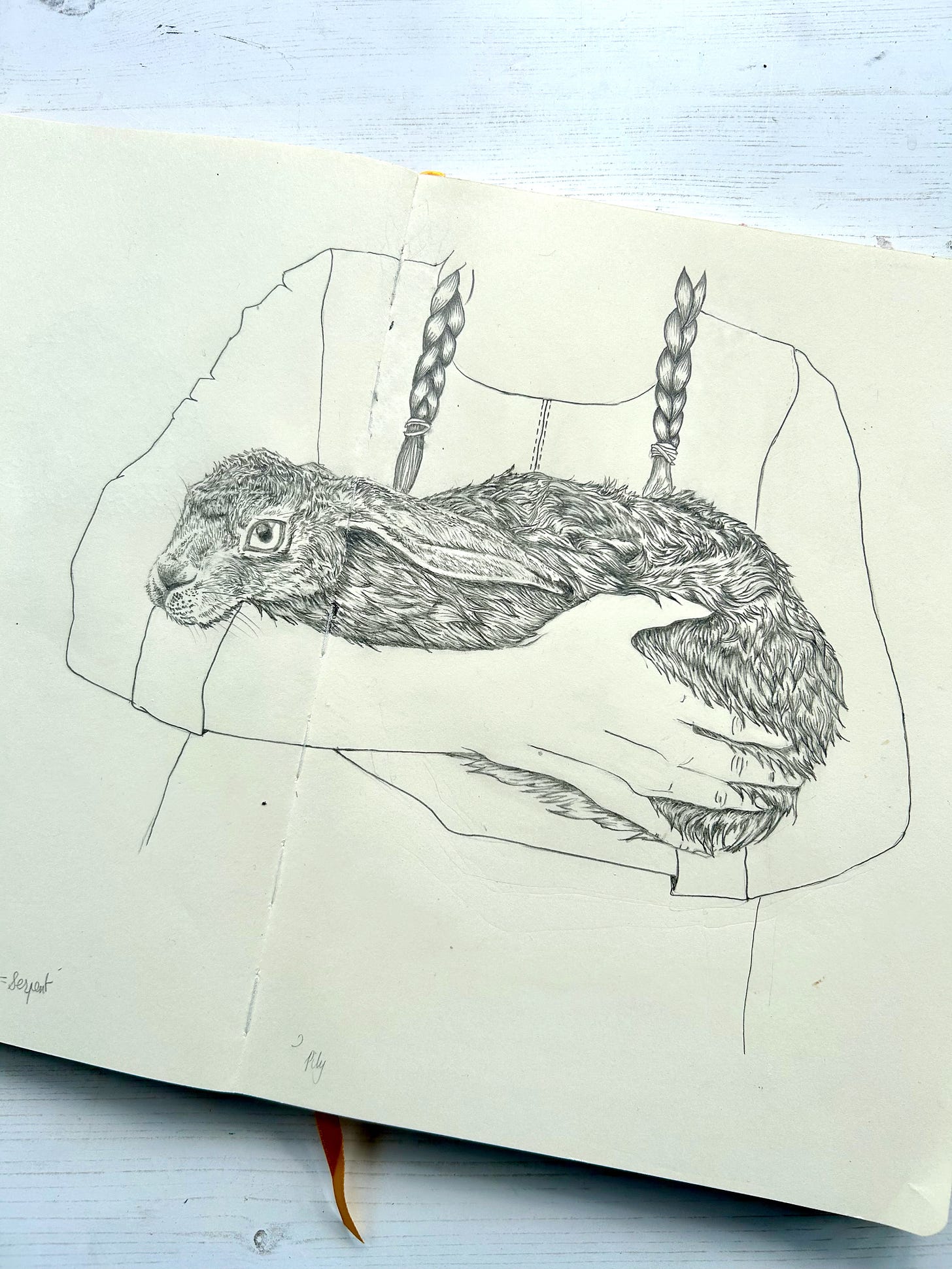
Funk ducks! 😃
Your drawings of hares are beautiful, they're such magical creatures.
I'm glad your local swift population is increasing. Our local swifts have been decreasing over the past few years and so far they've not used the nestboxes that we had put up a few years ago when we had rood work done. The first swifts did arrive back over our street about five days earlier this year than last, which is hopefully a good sign